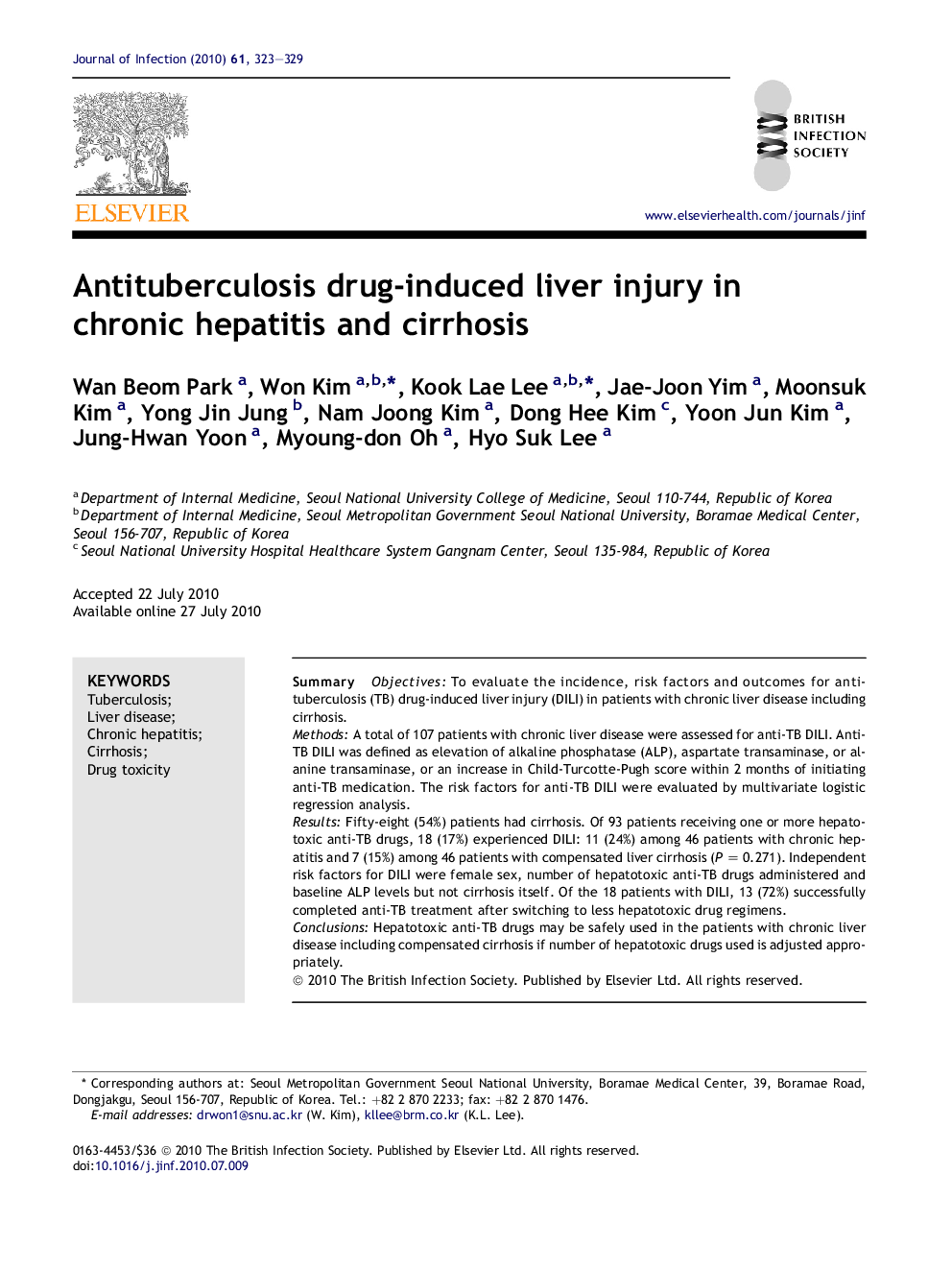| Article ID | Journal | Published Year | Pages | File Type |
|---|---|---|---|---|
| 3375210 | Journal of Infection | 2010 | 7 Pages |
SummaryObjectivesTo evaluate the incidence, risk factors and outcomes for anti-tuberculosis (TB) drug-induced liver injury (DILI) in patients with chronic liver disease including cirrhosis.MethodsA total of 107 patients with chronic liver disease were assessed for anti-TB DILI. Anti-TB DILI was defined as elevation of alkaline phosphatase (ALP), aspartate transaminase, or alanine transaminase, or an increase in Child-Turcotte-Pugh score within 2 months of initiating anti-TB medication. The risk factors for anti-TB DILI were evaluated by multivariate logistic regression analysis.ResultsFifty-eight (54%) patients had cirrhosis. Of 93 patients receiving one or more hepatotoxic anti-TB drugs, 18 (17%) experienced DILI: 11 (24%) among 46 patients with chronic hepatitis and 7 (15%) among 46 patients with compensated liver cirrhosis (P = 0.271). Independent risk factors for DILI were female sex, number of hepatotoxic anti-TB drugs administered and baseline ALP levels but not cirrhosis itself. Of the 18 patients with DILI, 13 (72%) successfully completed anti-TB treatment after switching to less hepatotoxic drug regimens.ConclusionsHepatotoxic anti-TB drugs may be safely used in the patients with chronic liver disease including compensated cirrhosis if number of hepatotoxic drugs used is adjusted appropriately.
